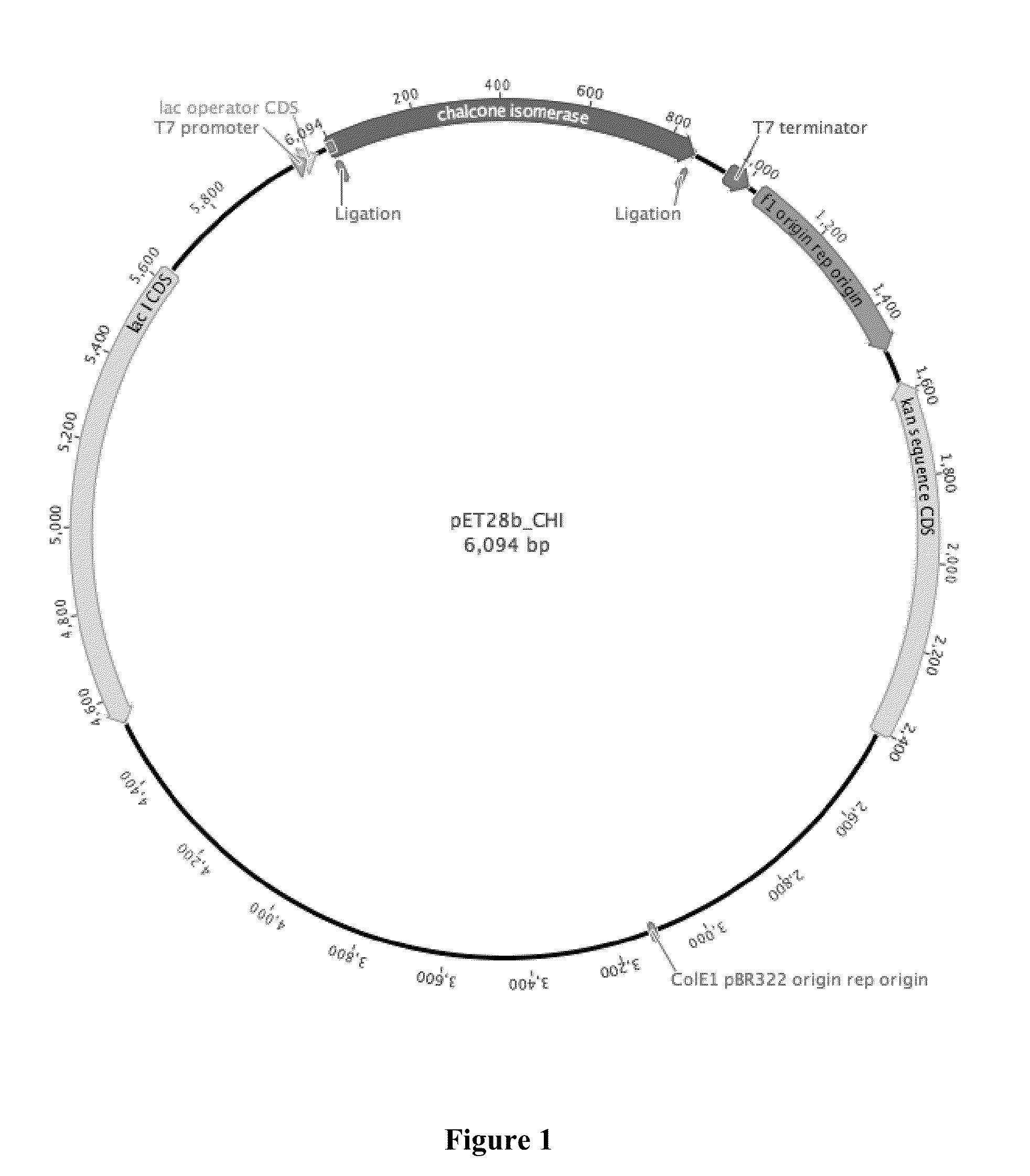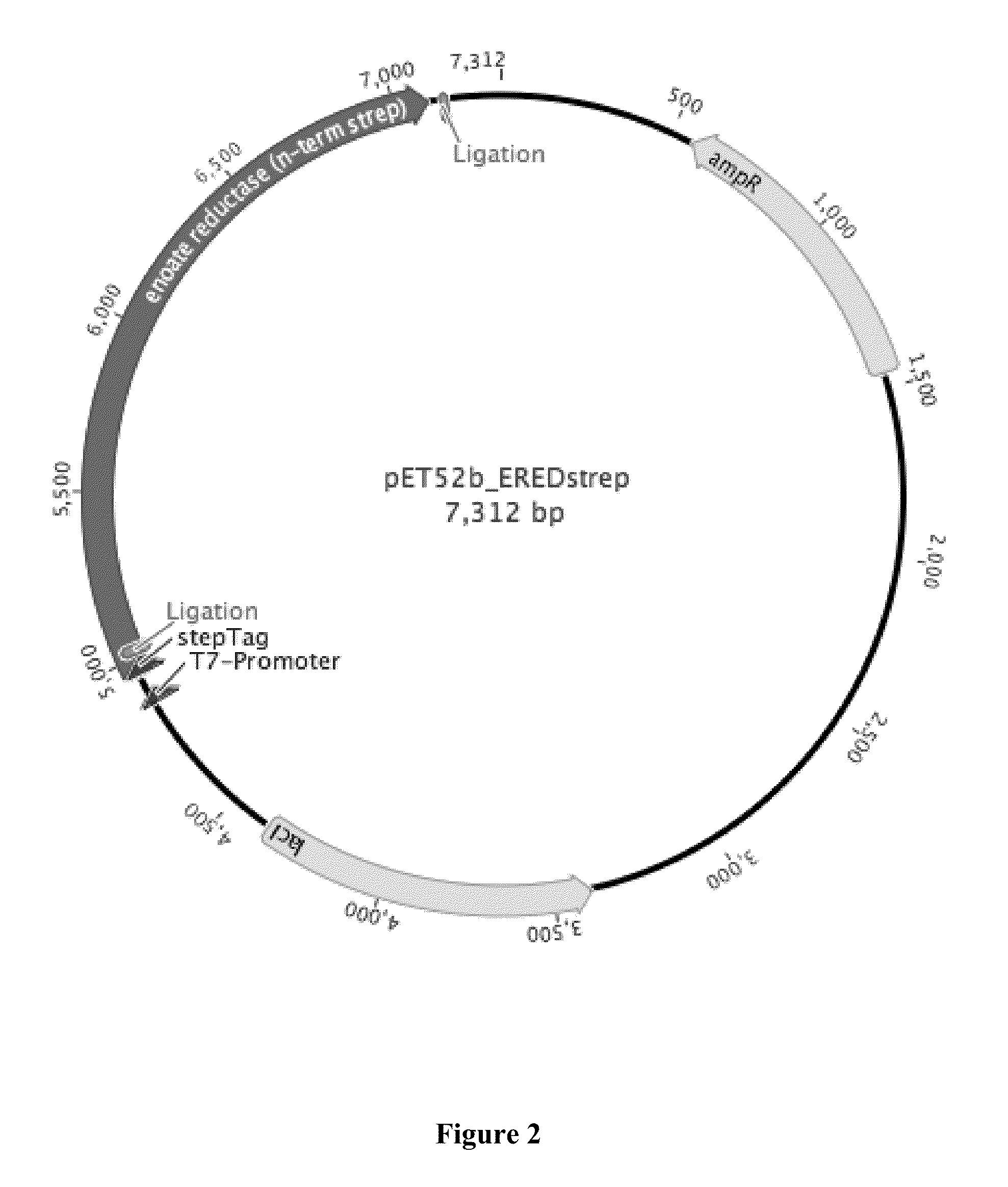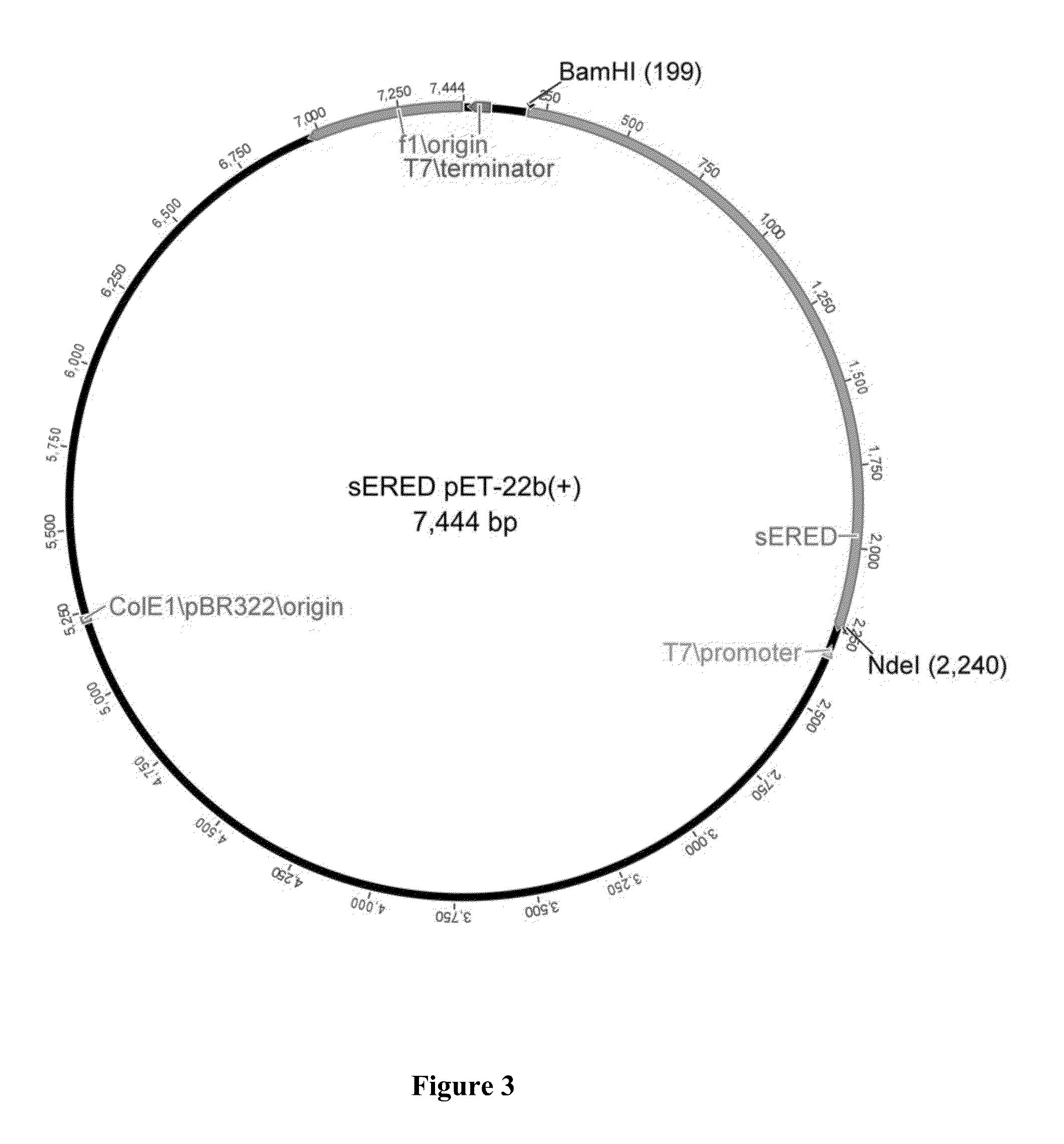Method for Biotechnological Production of Dihydrochalcones
a technology of dihydrochalcone and biotechnological production, which is applied in the direction of lyase, bulk chemical production, bacteria-based processes, etc., can solve the problems of time-consuming and cost-intensive process, food additives, flavourings or aromatic substances produced in this way cannot be described as natural,
- Summary
- Abstract
- Description
- Claims
- Application Information
AI Technical Summary
Benefits of technology
Problems solved by technology
Method used
Image
Examples
example 1
Provision of Transgenic Microorganisms (See Step (i))
[0149]1.1 CHI:
[0150]Using the identified gene sequence of the chalcone isomerase from E. ramulus two primers were prepared, which were used for reproduction of the genomic DNA by means of PCR. Here, with the help of the primers, in front of the gene a restriction interface was attached for Kpn1 and BamH1 and behind the gene an interface for Not1 to the target sequence, which were used for ligation of the gene section in the target vector.
[0151]Primers used (sequence sections, binding directly to the gene are shown in italics):
forward:CTAATCGGATCCGGTACCATGGCAGATTTCAAATTCGAACCAATGreverse:TCAGTAGCGGCCGCTTATCTCATGGTGATGTATCCACGATAATT
[0152]The resultant DNA fragment of the chalcone isomerase gene was inserted by means of TOPO TA Cloning® (from Invitrogen, Carlsbad, Calif., USA) in the vector pCR®2.1-TOPO®. Following successful transformation of this construct the chalcone isomerase gene was cut out from this vector via Nco1 and Not1 an...
example 2
Biotechnological production of phloretin (see Step (ii))
[0167]TB medium comprising 24 g yeast extract, 12 g Tryptone and 4 g glycerine is made up to 900 ml and autoclaved at 121° C. for 15 minutes. A separately prepared saline solution (0.72 M of K2HPO4 and 0.17 M of KH2PO4) is autoclaved under the same conditions. Then 100 ml of the saline solution is added to 900 ml of the sterile TB medium. LB medium comprising 5 g yeast extract, 10 g Tryptone and 10 g NaCl is made up to 1000 ml with distilled water and autoclaved for 15 minutes at 121° C.
[0168]The E. coli Rosetta or E. coli BL21 (see above) transformed for example according to Example 1 are first cultivated in 250 ml Erlenmeyer flasks (with baffles), filled with 50 ml LB medium, for approximately 8 hours at 37° C. and 180 rpm. From this culture 7 ml are then taken and used to inoculate a mini fermenter containing 700 ml of TB medium (as described above). The culture is grown over night at 25° C. and 150-200 rpm with 40% oxygen s...
example 3
Characterisation of the Expressed CHI
[0172]Following expression of for example pET28b_CHI in E. coli (see above) CHI can be established both in the soluble and in the insoluble fractions.
[0173]Following purification with for example anion exchange chromatography, hydrophobic interaction chromatography, size exclusion chromatography and / or Resource Q purification the CHI can be isolated for characterization (FIG. 5 provides examples of the results of the individual purification steps following expression of the vector pET28b_CHI in E. coli).
[0174]Our own investigations produced the results shown in Table 4:
TABLE 4Characterisation of the enzyme activity of the CHI followingexpression of the vector pET28b_CHI in E. coliKMkcatkcat / KM[μmol / l]Vmax [U / mg][s−1][l * mol−1 * s−1]36.83107.3416.71.13 * 107
PUM
 Login to View More
Login to View More Abstract
Description
Claims
Application Information
 Login to View More
Login to View More - R&D
- Intellectual Property
- Life Sciences
- Materials
- Tech Scout
- Unparalleled Data Quality
- Higher Quality Content
- 60% Fewer Hallucinations
Browse by: Latest US Patents, China's latest patents, Technical Efficacy Thesaurus, Application Domain, Technology Topic, Popular Technical Reports.
© 2025 PatSnap. All rights reserved.Legal|Privacy policy|Modern Slavery Act Transparency Statement|Sitemap|About US| Contact US: help@patsnap.com



